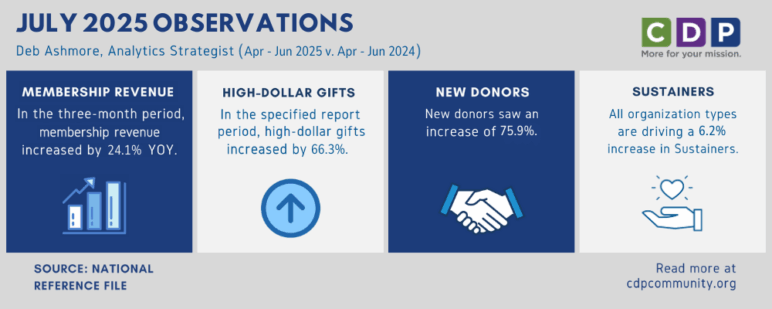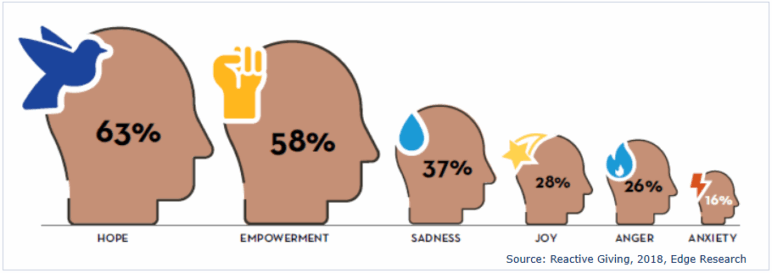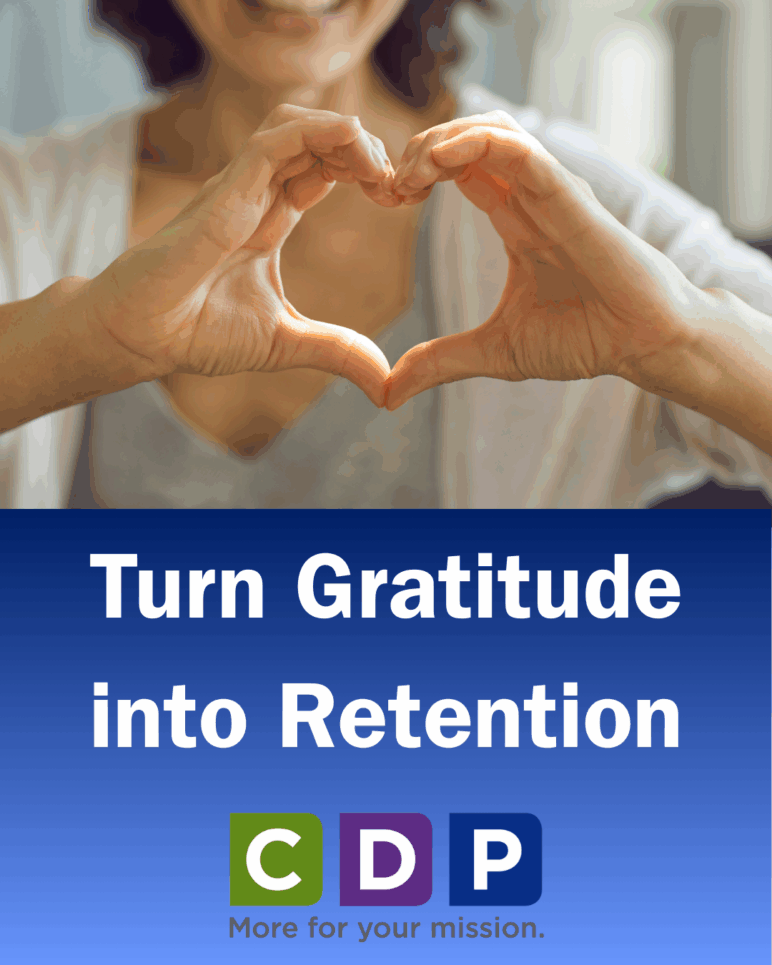From surge to staying power: How Public Media can retain its new wave of donors
SPONSORED
By Susannah Winslow
In the second quarter of 2025, public media organizations across the country experienced a remarkable surge in donor support — one that rivals any in recent memory. Sparked by threats to and the eventual elimination of federal funding, this wave of generosity has been both driven by necessity and a source of inspiration.
Between April and June, membership revenue for the 200 stations tracked in the National Reference File (NRF) rose by an impressive 24.1% year-over-year. Even more striking, the New Donor Index surged by 75.9%, with radio leading the charge at a median increase of 162.6%. TV and joint licensees also saw strong gains, with a 65.3% increase in the same timeframe.

These are more than mere statistics — they are a powerful signal of some of the American people’s concern about and belief in the mission of their local public media organizations.
But with this surge comes a critical challenge: How do we transform this reactionary giving into sustained, long-term commitment?
When threats to government funding dominate headlines, nonprofits often experience a spike in donations. These donors are driven by urgency — by passion, outrage or fear. But when the headlines fade or some other issue becomes front and center, will the donor engagement diminish?
The emotional landscape of giving
While some might label this phenomenon “rage giving,” a 2018 report from Edge Research that explores the 2017 “Trump bump” across nonprofit sectors suggests a more nuanced view. Their survey revealed that while anger (26%) and anxiety (16%) were certainly triggers for some donors, the majority were motivated by hope (63%) and empowerment (58%) — emotions that reflect a desire to build, not just react.
This broader emotional spectrum is why “reactive giving” is considered a more accurate term. It encompasses the full range of feelings that compel people to support causes they believe are threatened — and it offers a powerful opportunity for public media to deepen those connections.

The retention imperative
Transforming a moment of urgency into a lasting donor relationship requires more than gratitude — it demands a thoughtful, well-timed strategy. Donors who give in response to crisis often do so from a place of deep emotion, whether it’s hope, concern, frustration or some other feelings-based impulse. To retain these supporters, organizations must respond with stewardship that is both immediate and meaningful.
The first step is timely communication. Personalized thank-you messages sent promptly after a gift signal appreciation and begin to build trust. A structured welcome series — typically two to three emails over the first 30 days — helps orient new donors and reinforce their decision to give. Within 60 days, situational updates and impact stories can deepen engagement by showing how their support is already making a difference. These early touchpoints are not the time to ask again — they’re the time to connect, inform, and inspire.
Once that foundation is established, the next step is to invite deeper involvement. A short survey can uncover a donor’s interests and preferred ways to engage, making future outreach more relevant and personal. Donors who feel heard are more likely to stay. From there, stations can offer opportunities to participate — whether through virtual events, access to behind-the-scenes content, or volunteer opportunities — that help donors feel like part of the mission, not just supporters of it. By creating space for dialogue and connection, organizations can turn a single act of giving into a sustained relationship rooted in shared purpose.
Stewardship that meets the moment
At CDP, we’ve developed a suite of stewardship and engagement tools designed to meet this moment and help stations build lasting relationships with their new supporters. These tools are more than tactics — they can help turn gratitude into retention.

Quarterly Thank-You Calls
In partnership with ACD Direct, CDP offers a budget-friendly thank-you call program that delivers heartfelt appreciation to new donors — no ask, just thanks. These quarterly calls have been shown to boost retention and net revenue, and they require minimal lift from station teams.
Monthly Thank-You Texting
Timely, personalized texts sent within the first month of giving help reinforce a donor’s decision to support public media. Stations provide the phone list and can choose whether to include new sustainers or add a soft ask. With scripts available and low implementation costs, texting is a nimble, high-impact way to stay connected.
Personalized video messaging
Gratavid transforms digital outreach into a high-touch experience. Stations can send branded, personalized thank-you videos from hosts or staff to new donors. One station increased its first-year member retention rate by 5% and first-year revenue retention by 18% while intentionally using Gratavid to thank new donors. It’s scalable, easy to use, and designed to deepen donor affinity and retention.
Virtual events
CDP’s virtual events offer donors a unique way to engage with public media beyond their initial gift. Interactive experiences like the Wine Tasting with Rick Steves — returning in 2026 and blending travel storytelling with cultural connection — create memorable moments that reinforce donor value. And there’s still time to participate in the upcoming national virtual event, An Afternoon with Jacques Pépin, hosted in partnership with GBH. Whether live or on-demand, virtual events foster community, deepen engagement, and help donors feel like part of the mission.
Turning emotion into endurance
Donors who give in response to a crisis are not “lesser” supporters — they are new believers. Whether driven by hope, empowerment, or urgency, their gifts reflect a desire to make a difference. With the right stewardship, that spark can continue to burn strong and true as a lasting relationship.
The recent growth in giving is both a validation of our shared public service mission and a call to action. Let’s do more than thank donors for showing up during the storm. Let’s encourage them to stay and help build the future of public media.CDP is here to help you activate the right mix of stewardship tools for your organization. Contact us to learn more.


